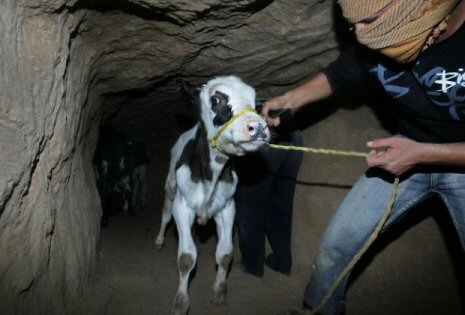Two Hamas resistance fighters were killed in a tunnel collapse in the southern Gaza Strip on Tuesday night, just one week after seven other fighters were killed in a tunnel collapse in northern Gaza.In a statement, Hamas’ military wing, the Izz al-Din al-Qassam Brigades, identified the fighters as 35-year-old Fouad Ashor al-Etewi and 23-year-old Ahmad Haidar al-Zahhar, from al-Nusirat refugee camp.
The statement added, according to Ma’an, that the tunnel ‘belonged to resistance,’ without providing further details.
Israeli forces, Wednesday morning, reportedly crossed the Gazan border east of Khan Younis, advancing 100 meters into the blockaded coastal enclave where a bulldozers ‘leveled’ land.
Locals said the soldiers were destroying tunnels. An Israeli army spokesperson said she was looking into the reports.
There were no reports of human casualties, according to WAFA correspondence.
The Israeli military made at least 50 military incursions into the Gaza Strip during 2015 alone, according to the UN Office for the Coordination of Humanitarian Affairs.
Since 2005, Israel unilaterally imposed a 300-meter-wide buffer zone into the border with Gaza, sharply affecting the livelihood of tens of thousands of Gaza farmers, who rely heavily on agriculture to provide for their families.
As of 2010, the UNOCHA estimated that 35 percent of Gaza’s agricultural land is located in restricted-access areas, affecting the lives and livelihoods of approximately 113,000 people.
Farmers on the borders say their situation has only worsened since the last war ended in the summer of 2014, pointing to the Israeli military’s frequent incursions into their land and its practice of firing live ammunition at farmers who enter the ‘buffer zone’ between Gaza and Israel.
Israel continues to breach a ceasefire deal reached with the Palestinian side on August 26, 2014, following 51 days of deadly aggression on the strip, which claimed the lives of over 2,200 Gaza refugees, overwhelmingly civilians.
Gaza’s tunnel networks, which are largely used for smuggling in the coastal enclave’s south and military purposes in the north, are notoriously dangerous.
The Institute for Palestine Studies reported in 2012 that Hamas authorities had counted 160 deaths inside the tunnels since the Israeli blockade began in 2007, and in August 2014, al-Jazeera reported that figure to be as high as 400.
While the tunnels are used by Hamas as a source of tax revenue and inflow of weapons, they also supply highly-demanded necessities for Gaza’s 1.8 million residents under the blockade, including food, medicine, as well as infrastructure materials like concrete and fuel.
Hamas claims to have rebuilt many of the tunnels that were destroyed during 2014’s devastating war with Israel. Last week, the Israeli authorities threatened to seal crossings between Israel and the Gaza Strip due to recent Hamas activity.
Search IMEMC: ‘Hamas’

